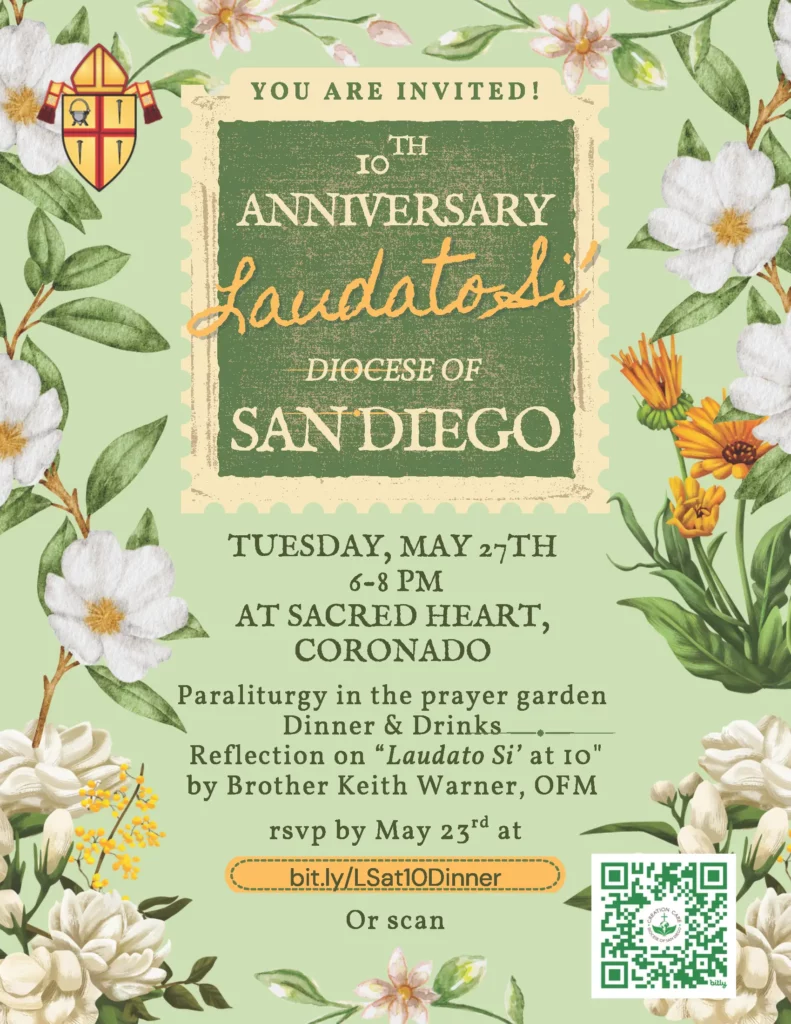May 24, 2025 marks the 10th anniversary of Pope Francis’ encyclical Laudato Si’. It is with a bitter sweetness that we recognize this day, but we praise God for this good guidance and the tremendous inspiration our Holy Father has given us. May we continue to carry forth this mission.
Let us therefore replenish our wells with an evening of communal celebration and joy!
We will begin with a para-liturgy in the prayer garden at 6PM, followed by a catered dinner at 6:30PM in the parish hall and a reflection on “10 Years of Laudato Si'” by Brother Keith Warner, OFM. Brother Keith is a professor at the Franciscan School of Theology and co-author of Care for Creation with Sr. Ilia Delio, OSF and Pamela Wood (2008).
Register by May 23rd at bit.ly/LSat10Dinner.
This event is free, but please honor your registration and notify Christina of any necessary cancellation with advance notice at cslentz@sdcatholic.org.


